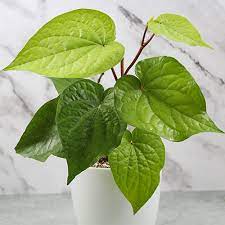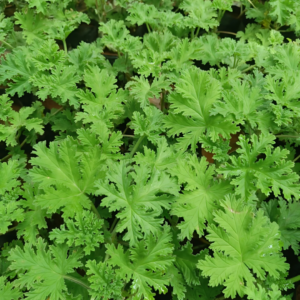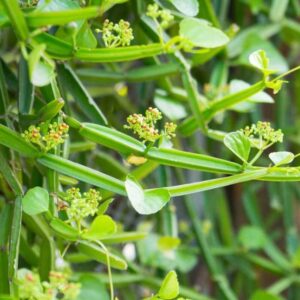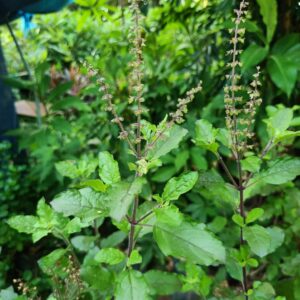Betel leaf, scientifically known as Piper betle, is a heart-shaped leaf widely cultivated across South and Southeast Asia. Revered for its cultural, medicinal, and social significance, it holds a cherished place in various traditions and rituals.
Botanically belonging to the Piperaceae family, the betel leaf vine thrives in warm, humid climates, often found climbing trees or trellises. Its glossy, green leaves exude a distinct aroma and possess a slightly peppery taste.
Culturally, betel leaf holds immense significance, especially in South Asian societies. It is deeply ingrained in rituals, ceremonies, and social customs, often symbolizing hospitality, respect, and goodwill. Traditionally, offering betel leaf, along with areca nut and slaked lime, is a gesture of welcome and honor in many communities.
Medicinally, betel leaf boasts a plethora of health benefits. Rich in vitamins, minerals, and antioxidants, it has been utilized in traditional medicine for centuries. Its essential oils and bioactive compounds exhibit anti-inflammatory, antimicrobial, and digestive properties. In Ayurveda, it is revered for its ability to alleviate respiratory issues, improve digestion, and promote oral health.
Moreover, betel leaf plays a central role in culinary practices across Asia. It is commonly used as a flavoring agent in various dishes, imparting a unique aromatic profile to savory and sweet delicacies alike. Additionally, it is often chewed with areca nut and other ingredients as a traditional stimulant, known as ‘paan,’ offering a refreshing and mildly intoxicating experience.
However, despite its cultural and medicinal significance, the indiscriminate consumption of betel quid, especially with tobacco, poses serious health risks. Regular use has been linked to oral cancers, gum disease, and other health complications, prompting health authorities to advocate for its controlled consumption.
In essence, betel leaf embodies a rich tapestry of cultural heritage, medicinal wisdom, and culinary allure. Its multifaceted nature continues to fascinate and inspire people across the globe, making it a cherished botanical treasure deeply woven into the fabric of Asian culture and tradition.







सलमा खान –
Adhilakshmi –
Betel leaf Herbal plants
G.lavanya –
When can I get the order
Vimala –
Nice
Vimala –
Nice plants
Satish –
Satish
Kalpana –
1st time am buying
Syamala –
I want this plant
ARAVIND –
Hello